Wadjet – Egyptian Goddess Protected Pharaohs And Was Depicted As A Cobra-Uraeus
Angela Sutherland - AncientPages.com - In Egyptian mythology, Wadjet is a goddess depicted as a cobra and worshiped in Lower Egypt. Wadjet was represented as a cobra-uraeus.
 Wadjet illustration from Pantheon égyptien by Leon Jean Joseph Dubois. Image credit: Rawpixel -CC BY-SA 4.0
Wadjet illustration from Pantheon égyptien by Leon Jean Joseph Dubois. Image credit: Rawpixel -CC BY-SA 4.0
The Uraeus ("rearing cobra"), in the upright form of an Egyptian cobra, symbolized sovereignty, royalty, deity, and divine authority in ancient Egypt and is closely associated with the goddess Wadjet.
She protected the Egyptian pharaohs, and the Uraeus (the image of Wadjet with the solar disk) was displayed upon the pharaoh's head and was a part of the pharaoh's crown.
It symbolically protected the pharaoh's power in this earthly realm and the heavenly abode. The pharaoh was recognized only by wearing the Uraeus. This tradition is ancient and goes back to the Old Kingdom during the third millennium BC. Several goddesses associated with or considered aspects of Wadjet are also depicted wearing the Uraeus.
According to Greek historical sources, her temple and the oracle were located in Per-Wadjet, later known as Buto, officially Wadjet's cult center.
 Nefertum on a lotus flower is depicted between the Ladies of the Two Lands - Wadjet and Nekhbet. Temple of Dendera, Roman period. Image credit: Olaf Tausch - CC BY 3.0
Nefertum on a lotus flower is depicted between the Ladies of the Two Lands - Wadjet and Nekhbet. Temple of Dendera, Roman period. Image credit: Olaf Tausch - CC BY 3.0
Wadjet was associated with the Nile Delta region from a very early time. In Egypt's pre-Dynastic period, Wadjet was the guardian of all of Lower Egypt, while her counterpart, the vulture goddess Nekhbet, played a similar role in Upper Egypt. So, a real connection existed between a serpent-headed Wadjet and Nekhbet, the vulture goddess in Upper Egypt. This connection was also clearly seen.
At the time of the unification of Upper and Lower Egypt, Nekhbet joined the image of Wadjet on the Uraeus that would encircle the crown of the pharaohs who ruled unified Egypt. The double crown of the rulers of Egypt was known as pschent, the "Two Powerful Ones."
Wadjet was depicted as an attacking cobra, which could symbolize the divine care of the pharaoh, who was seen as the gods' representative on Earth and one of the gods. He played a crucial role in the Egyptian cult. As a god and the personification of Egypt, he possessed more power than any other monarch recorded in human history.
However, he was a strong ruler, a high priest, a lawmaker, and a battle commander. The pharaoh was both a political and a religious leader.
Due to his unique position, the pharaoh needed Wadjet, a protector.
It was believed that she provided him with power and authority. Therefore, her images were placed on royal crowns, showing her close association with the ruler.
Image of Wadjet at Deir el-Bahri Temple. Image credit: I, Rémih - CC BY-SA 3.0
The pharaohs wore the Uraeus as a head ornament, either with the body of Wadjet atop his head or as a crown encircling his head.
This decoration symbolized the goddess's protection of the ruler and supported his right over the land.
Wadjet is not a goddess mentioned often in the "Pyramid Texts" because she, first and foremost, is linked with the world of the living. Her name "Wadjet" means "the green one," which is most probably related to the natural color of the serpent or the color of the papyrus (plant-symbol of Lower Egypt).
Wadjet – The "Mistress Of Fear"
Why was the goddess known as the "Mistress of Fear" or the "Mistress of Awe?
According to Egyptian mythology, the royal serpent spat terrible flames in defense of the king, and military inscriptions of Ramesses II (those related to the great Battle of Kadesh) describe Wadjet, who, with her fiery breath, mercilessly killed the pharaoh's enemies.
For Ramesses II, this battle (fought against the Hittites) was his reign's most significant historical event. He led his smaller force of 20,000 men against the larger Hittite army of 50,000 men.
In some other myths, as linked with several leonine goddesses, Wadjet is referred to as the famous "Eye of Ra." In addition, we remember Wadjet as a possible mother of Nefertum, and was highly regarded as a caregiver for women giving birth.
Amulets of the goddess Wadjet were popular during the Saite Period (724-712 BC). Her shrine was known as the "house of flame" and attested to pre-dynastic times. Interestingly, although related to the living world, Wadjet was often included in funerary decorations of the ancient Egyptians, so one can say this goddess was a revered deity.
Updated on September 7, 2024
Written by – A. Sutherland - AncientPages.com Senior Staff Writer
Copyright © AncientPages.com All rights reserved. This material may not be published, broadcast, rewritten or redistributed in whole or part without the express written permission of AncientPages.com
Expand for referencesMore From Ancient Pages
-
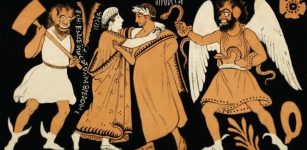 Tuchulcha: Wicked, Hideously Grotesque Etruscan Demon Identified With Both Male And Female Genders
Featured Stories | Jun 11, 2023
Tuchulcha: Wicked, Hideously Grotesque Etruscan Demon Identified With Both Male And Female Genders
Featured Stories | Jun 11, 2023 -
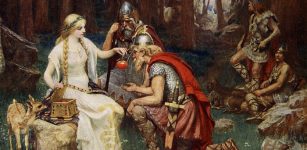 The Golden Apple Myth And Norse Goddess Idun
Featured Stories | Jan 2, 2016
The Golden Apple Myth And Norse Goddess Idun
Featured Stories | Jan 2, 2016 -
 Cooking, Roasting And Eating Of Root Plants Is 120,000-Year-Old Habit
Archaeology | Jun 7, 2019
Cooking, Roasting And Eating Of Root Plants Is 120,000-Year-Old Habit
Archaeology | Jun 7, 2019 -
 Strange Mist, Unexplained Vanishings And Other Bizarre Incidents – What Is The Connection?
Featured Stories | Mar 8, 2019
Strange Mist, Unexplained Vanishings And Other Bizarre Incidents – What Is The Connection?
Featured Stories | Mar 8, 2019 -
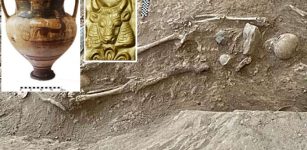 Tombs Rich In Artifacts Discovered By Swedish Expedition In Cyprus
Archaeology | Jul 6, 2023
Tombs Rich In Artifacts Discovered By Swedish Expedition In Cyprus
Archaeology | Jul 6, 2023 -
 Three Ingots Shed Light On The Mining Exploitation Of The Sierras de Córdoba Mountain Range
Archaeology | May 8, 2024
Three Ingots Shed Light On The Mining Exploitation Of The Sierras de Córdoba Mountain Range
Archaeology | May 8, 2024 -
 Neanderthals’ Lack Of Drawing Ability Could Explain Why Modern Humans Became Smarter
Archaeology | Feb 11, 2018
Neanderthals’ Lack Of Drawing Ability Could Explain Why Modern Humans Became Smarter
Archaeology | Feb 11, 2018 -
 New Species Of Softshell Turtle That Lived In North Dakota 66.5 Million Years Ago With Dinosaurs Discovered
Fossils | Mar 14, 2022
New Species Of Softshell Turtle That Lived In North Dakota 66.5 Million Years Ago With Dinosaurs Discovered
Fossils | Mar 14, 2022 -
 Medicine in Antiquity: From Ancient Temples To Roman Logistics
Archaeology | Apr 13, 2018
Medicine in Antiquity: From Ancient Temples To Roman Logistics
Archaeology | Apr 13, 2018 -
 On This Day In History: Seismologist Charles Richter Was Born – On Apr 26, 1900
News | Apr 26, 2016
On This Day In History: Seismologist Charles Richter Was Born – On Apr 26, 1900
News | Apr 26, 2016 -
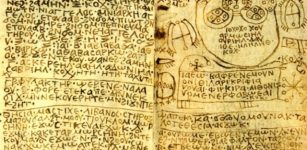 Ancient Mystery Of Baktiotha And The Egyptian Spell Book
Artifacts | Sep 4, 2015
Ancient Mystery Of Baktiotha And The Egyptian Spell Book
Artifacts | Sep 4, 2015 -
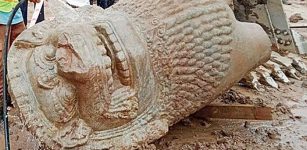 Two Pieces Of A Six-Foot-Tall Lion Statue Accidentally Found In Phnom Penh, Cambodia
Archaeology | Sep 12, 2020
Two Pieces Of A Six-Foot-Tall Lion Statue Accidentally Found In Phnom Penh, Cambodia
Archaeology | Sep 12, 2020 -
 Prehistoric Humans Adapted To Intense Climate Change – New Study
Archaeology | Apr 22, 2022
Prehistoric Humans Adapted To Intense Climate Change – New Study
Archaeology | Apr 22, 2022 -
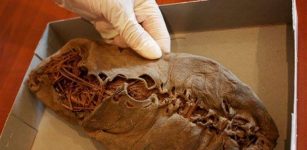 World’s Oldest Shoe Is 5,000-Year-Old
Archaeology | Jul 10, 2015
World’s Oldest Shoe Is 5,000-Year-Old
Archaeology | Jul 10, 2015 -
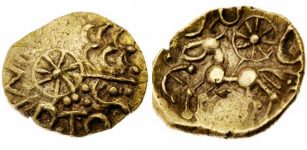 Ancient Coin Reveals Name Of Unknown British Iron Age King – Who Was ‘Esunertos’?
Archaeology | Oct 21, 2023
Ancient Coin Reveals Name Of Unknown British Iron Age King – Who Was ‘Esunertos’?
Archaeology | Oct 21, 2023 -
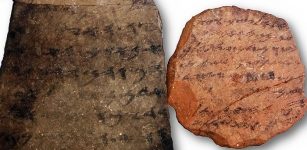 Widespread Literacy In Biblical-Period Kingdom Of Judah – Study Confirms
Archaeology | Sep 11, 2020
Widespread Literacy In Biblical-Period Kingdom Of Judah – Study Confirms
Archaeology | Sep 11, 2020 -
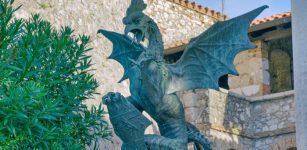 Legendary Basilisk With Deadly Petrifying Stare – King Of The Serpents
Featured Stories | Dec 27, 2021
Legendary Basilisk With Deadly Petrifying Stare – King Of The Serpents
Featured Stories | Dec 27, 2021 -
 Rare Coins Found In A Dead Sea Cave Offer First Solid Evidence For The Maccabean Revolt 2,200 Years Ago
Archaeology | Jan 2, 2023
Rare Coins Found In A Dead Sea Cave Offer First Solid Evidence For The Maccabean Revolt 2,200 Years Ago
Archaeology | Jan 2, 2023 -
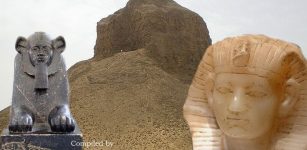 The Black Pyramid Of Amenemhat III – Mysterious Underground Chambers And Lost Ancient Treasures
Featured Stories | Aug 9, 2021
The Black Pyramid Of Amenemhat III – Mysterious Underground Chambers And Lost Ancient Treasures
Featured Stories | Aug 9, 2021 -
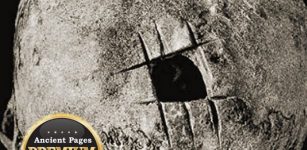 Prehistoric Surgery: Skull Operations Technically Superior To Our Own
Ancient Mysteries | Dec 24, 2014
Prehistoric Surgery: Skull Operations Technically Superior To Our Own
Ancient Mysteries | Dec 24, 2014

